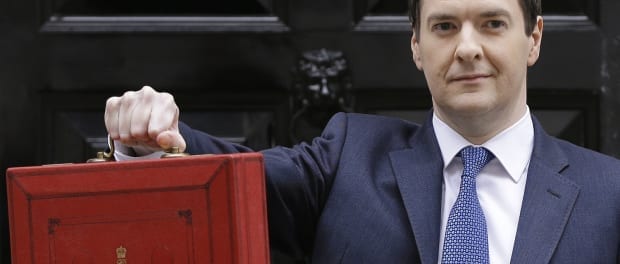The economy is an electoral deal-breaker. The ability of the government to maintain or manage the economy is seen as a key indicator of its success. Indeed, research would suggest that economic competence is one of the two factors which, when present, secure a win at the polls.
But it’s also an electoral brain-bender. Jargon whipped out by politicians, policy wonks and economists can make the debate impenetrable for voters who want to make an informed political decision. Frustratingly, economics is often clothed in mathematical language and terminology that allow it to boast of being a subject of empirical truth, but with both sides claiming alternative ‘scientific’ evidence to be true, understanding it becomes even harder. This simple breakdown of economic concepts and arguments should help you access the debate next time the graphs come knocking.
What is difference between debt and deficit?
National (or sovereign debt) is the amount of money that the government owes to various creditors (lenders). It is money that it has borrowed to finance the running of the country, when tax revenue is not enough to pay for it all. The government borrows money by lending gilts, which are a type of bond. This means that the government ‘sells’ a bond to banks or households, with an agreed price on maturity. This means that you could invest £500 into government bonds and receive, say, an agreed £550 after five years. In this way, investors receive an interest payment of sorts. The investor makes money in return for financing the government for £500. The government debt is made up of thousands and thousands of bond agreements, which are lent to investment banks, insurance companies and pension funds, building societies and ordinary households. The chart below shows the location of UK gilts.
The total amount of money that the government owes to all of these institutions and households is called the national debt. The deficit is the difference between tax revenue in a given year, and the amount a government plans to spend. The chart below shows the budget for 2013, broken down to show where it was spent. In 2013, £108bn was borrowed, to finance government spending. Since 2010, the Conservatives have been trying to reduce the deficit, to ‘balance the books’ after the high levels of government spending under Labour. The debate about whether an economy in crisis should be rescued with more or less government spending is explained below.
What is the difference between monetary and fiscal policy?
Monetary and fiscal policy are the two branches of policy that economic journalists and politicians refer to. Monetary policy is carried out by the central bank, which in the UK is the Bank of England, and fiscal policy is carried out by the government. Monetary policy includes some regulation of the banking sector, but mostly it is just the setting of interest rates. The Bank Rate, set by the BoE, effectively determines the rates of interest for saving and lending by commercial banks and households. In the UK, the Bank Rate currently stands at 0.5%, which is extremely low. Before the 2008 crisis, the rate stood at around 2 or 3 per cent. The rationale behind monetary policy is that when credit is cheap (because interest rates are low), more people will borrow and spend, which creates jobs, fuels industry and boosts growth.
Fiscal policy is, in short, spending by the government in the economy. Here is where the political distinction between Labour and the Tories lies. Left-leaning parties tend to be followers of ‘Keynesian’ economics, which is in part the belief that the government should spend money in the economy to boost growth. Keynesians argue that the main problem with an economy in crisis is that there is not enough demand (people wanting to buy things), and that by running public work schemes and creating jobs, the government puts money into people’s pockets that they can spend on goods.
The Tories argue that it is not the government’s role to provide goods and services, and that the economy should be left to the free market. There was a huge fiscal policy reversal in 2010 when the Conservatives came to power, because the Labour government under Gordon Brown had been ‘spending out of a crisis’, in line with Keynesian thought. The ‘long term economic plan’ of the Conservatives has been one of austerity – cutting the budget – to spend less and reduce the deficit. This harsh austerity, many have argued, has sustained the recession by stagnating demand.
And whilst the politicians continue to argue about it, you can now listen, content with the jargon. Good luck staying interested!
